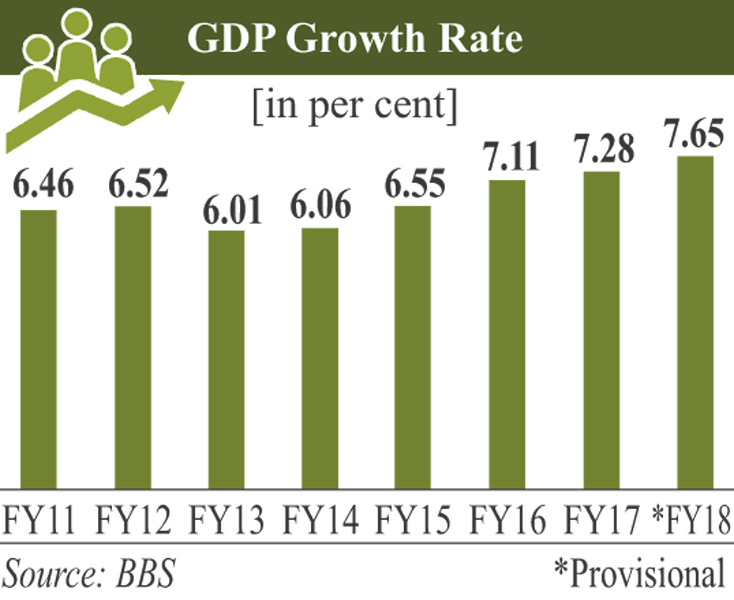The government has set a 7.8 per cent economic growth target for the forthcoming fiscal year (FY).
This is aimed at taking the economy towards the higher growth trajectory over the next couple of years.
 The Gross Domestic Growth (GDP) growth target for FY 2018-19 is 0.25 percentage points higher than the 7.65 per cent of the outgoing fiscal.
The Gross Domestic Growth (GDP) growth target for FY 2018-19 is 0.25 percentage points higher than the 7.65 per cent of the outgoing fiscal.
In the budget proposal for FY 2018, the government set an economic growth target of 7.4 per cent.
Under the latest Medium Term Macroeconomic Framework (MTMF), Bangladesh targets a growth rate of 8.0 per cent by FY2020 as set in the ongoing Seventh Five-Year Plan (SFYP).
In FY2016, the economic growth rate for the first time crossed 6.0 per cent.
The economy grew at a rate of 7.11 per cent against the target of 7.0 per cent, showed the data of Bangladesh Bureau of Statistics (BBS).
During the last 6th five-year plan period, from FY2011 to FY2015, the government came under fire for targeting an ambitious growth rate of over 7.0 per cent despite its lower and stagnant fiscal achievements.
Finance Minister AMA Muhith said on Thursday, in his budget speech so far, in the 21st century, the average growth rate hit 6.6 per cent.
During the last couple of years it averaged over 7.0 per cent, he added.
"Based on this strong footing, we have started formulating our perspective plan 2021-2041," he said.
The finance minister believes that it will be possible to accelerate the growth rate to 10 per cent, if decentralisation can happen in the country.
"The articles 59 and 60 of the Constitution have provisions in this regard," he said.
According to the provisions of these articles, he said, "If we want to bring about constitutional reforms, we need to establish autonomous and self-reliant governments in 64 districts and nine metropolitan cities."
For this type of government, they have to introduce their own pattern of bureaucracy, Muhith argued.
kabirhumayan10@gmail.com